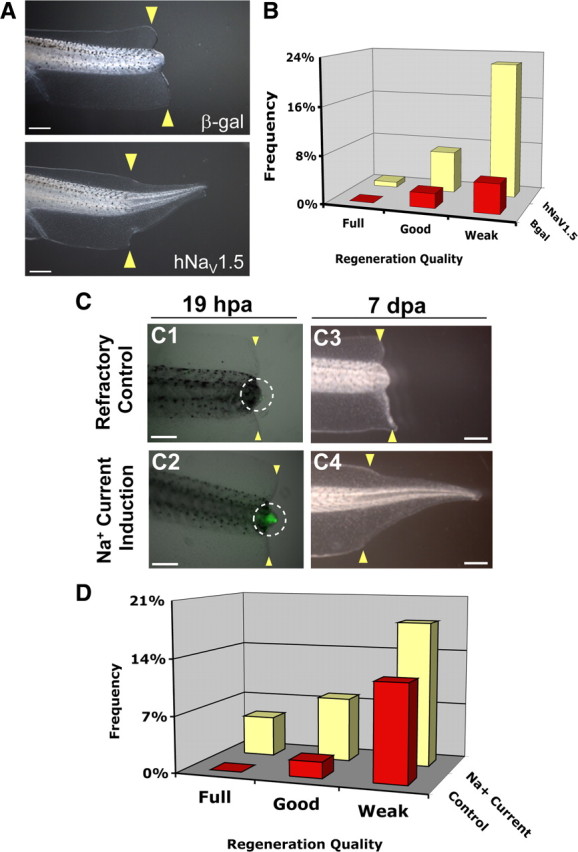Figure 3.

Transient induction of sodium current drives regeneration. A, Regeneration rescue by human NaV1.5 (h NaV1.5). Control tail stumps (β-gal-injected) cut during the refractory period regenerate poorly, which is rescued by hNaV1.5 expression. B, Effects of regeneration rescue by hNaV1.5 during refractory period block. C, CoroNa Green analysis of sodium-current induction. C1, Control (vehicle only), noninduced refractory stage bud has little CoroNa Green signal. C2, Induction with 90 mm sodium and 20 μm monensin for 1 h (18–19 hpa) significantly increases intracellular sodium (green). Images are merged brightfield and fluorescence of the same exposure time. White circle, Refractory bud. C3, Most refractory stage amputations fail to regenerate. C4, Stimulation with sodium current restores full regeneration. D, Transient sodium current rescues nonregenerative wound epidermis. Stimulation of sodium current increased regeneration more than twofold and improved regeneration quality compared with control siblings (treated with vehicle only, 0.01% ethanol). Treatment with either monensin or 90 mm sodium alone showed no effect. Scale bars: A, 1 mm; C, 500 μm.
